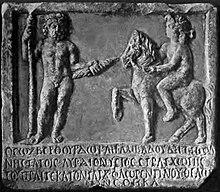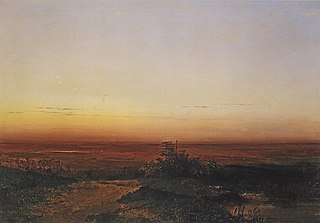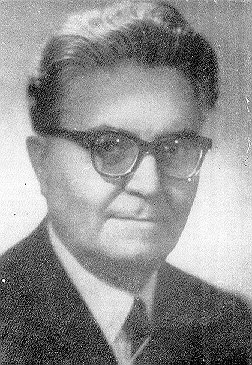This article needs additional citations for verification .(January 2022) |

Iambadoule is a Thracian goddess, epigraphically testified together with the Thracian god Zberthourdos (Sbelsurdos).
This article needs additional citations for verification .(January 2022) |

Iambadoule is a Thracian goddess, epigraphically testified together with the Thracian god Zberthourdos (Sbelsurdos).
The deity is attested in an inscription written in Ancient Greek. A male deity, identified as Zberthourdos, is standing unclothed with a naked woman on a horse by his side. [1] [2]
Translation:
According to Dimitar Detschew, the form Ἰαμβαδούλῃ appears in the dative, pointing to a nominative Ἰαμβαδούλῃ (Iambadoule) or Ἰαμβαδούλῃς (Iambadoules). [3]
French archeologist Paul Perdrizet indicated that the particle "-δουλέ" is also attested in personal name Δουλέ-ζελμις, a Thracian mercenary. [4]
Detschew suggested that the deity's name is an epithet of a Thracian earth-mother goddess, translated as "the one that places the grain", with "iamba" meaning "wheat; wealthy, nutrition", and "doule" from Proto-Indo-European *dhe- 'to place', plus nomen agentis suffix -lo. [5]
Bulgarian linguist Vladimir I. Georgiev proposed that Iambadoules means 'rainstorm, thunderstorm', from Dula 'the storm', [6] with relation to Old Iranian ambhas 'water' and Greek θύελλα (thúella) 'storm'. [7]
According to researcher Dragoslav Antonijević, Dragojlovic argued that the South Slavic character of the samovila (a fairy-like figure) is a continuation of this Thracian goddess. [8]
Zalmoxis also known as Salmoxis (Σάλμοξις), Zalmoxes (Ζάλμοξες), Zamolxis (Ζάμολξις), Samolxis (Σάμολξις), Zamolxes (Ζάμολξες), or Zamolxe (Ζάμολξε) is a divinity of the Getae and Dacians, mentioned by Herodotus in his Histories Book IV, 93–96, written before 425 BC.

Zibelthiurdos is a Thracian god of heaven, lightning and rain, whose name is known mainly from epigraphic monuments. The only known reference to this god so far in ancient literature is in Cicero's speech against Pizon, where he is mentioned under the name Jovi Vrii. According to Cicero, Jupiter Urius had the most ancient and venerated of the barbarian temples, which was sacked by invading armies and resulted in diseases from which those afflicted never recovered.
The Bebryces were a tribe of people who lived in Bithynia. According to Strabo they were one of the many Thracian tribes that had crossed from Europe into Asia, although modern scholars have rather argued for a Celtic origin.

In Roman mythology and religion, Quirinus is an early god of the Roman state. In Augustan Rome, Quirinus was also an epithet of Janus, as Janus Quirinus.

Bendis was a Thracian goddess associated with hunting and the moon. Worship of the goddess seems to have been introduced into Attica around 430 BC. In Athens, Bendis was identified with the goddess Artemis, but she had a separate temple at Piraeus, near the temple of Artemis, and was a distinct goddess. She was a huntress, like Artemis, but was often accompanied by dancing satyrs and maenads, as represented on a fifth-century red-figure stemless cup at Verona.

The Rhodopes are a mountain range in Southeastern Europe, and the largest by area in Bulgaria, with over 83% of its area in the southern part of the country and the remainder in Greece. Golyam Perelik is its highest peak at 2,191 meters (7,188 ft). The mountain range gives its name to the terrestrial ecoregion Rodope montane mixed forests that belongs in the temperate broadleaf and mixed forests biome and the Palearctic realm. The region is particularly notable for its karst areas with their deep river gorges, large caves and specific sculptured forms, such as the Trigrad Gorge.
Dacian is an extinct language generally believed to be a member of the Indo-European language family that was spoken in the ancient region of Dacia.
The Thracian language is an extinct and poorly attested language, spoken in ancient times in Southeast Europe by the Thracians. The linguistic affinities of the Thracian language are poorly understood, but it is generally agreed that it was an Indo-European language.

*H₂éwsōs or *Haéusōs is the reconstructed Proto-Indo-European name of the dawn goddess in the Proto-Indo-European mythology.

Rhesus is a mythical king of Thrace in The Iliad who fought on the side of Trojans. Rhesus arrived late to the battle and while asleep in his camp, Diomedes and Odysseus stole his team of horses during a night raid on the Trojan camp.
*Perkʷūnos is the reconstructed name of the weather god in Proto-Indo-European mythology. The deity was connected with fructifying rains, and his name was probably invoked in times of drought. In a widespread Indo-European myth, the thunder-deity fights a multi-headed water-serpent during an epic battle in order to release torrents of water that had previously been pent up. The name of his weapon, *mel-d-(n)-, which denoted both "lightning" and "hammer", can be reconstructed from the attested traditions.
The linguistic classification of the ancient Thracian language has long been a matter of contention and uncertainty, and there are widely varying hypotheses regarding its position among other Paleo-Balkan languages. It is not contested, however, that the Thracian languages were Indo-European languages which had acquired satem characteristics by the time they are attested.
Thracology is the scientific study of Ancient Thrace and Thracian antiquities and is a regional and thematic branch of the larger disciplines of ancient history and archaeology. A practitioner of the discipline is a Thracologist. Thracology investigates the range of ancient Thracian culture from 1000 BC up to the end of Roman rule in the 4th–7th centuries AD. It is believed 'modern' Thracology started with the work of Wilhelm Tomaschek in the late 19th century.
Atepomarus in Celtic Gaul was a healing god. Mauvières (Indre), Apollo was associated with this god in the form Apollo Atepomarus.

The Thracian horseman is a recurring motif depicted in reliefs of the Hellenistic and Roman periods in the Balkans—mainly Thrace, Macedonia, Thessaly and Moesia—roughly from the 3rd century BC to the 3rd century AD. Inscriptions found in Romania identify the horseman as Heros and Eros and also Herron and Eron, apparently the word heroes used as a proper name. He is sometimes addressed in inscriptions merely as κύριος, δεσπότης or ἥρως.

Vladimir Ivanov Georgiev was a Bulgarian linguist, philologist, and educational administrator.

Rincaleus is a Thracian god, known from a few epigraphic inscriptions found near Krinides, Philippi, Greece. He is identified as a "Great God" in the pantheon of the Sapei, and is presented as a horseman. The dedications were made by Roman citizens. The theonym is written in Latin. Probably Rincaleus is local deity and was syncretized with Apollo.